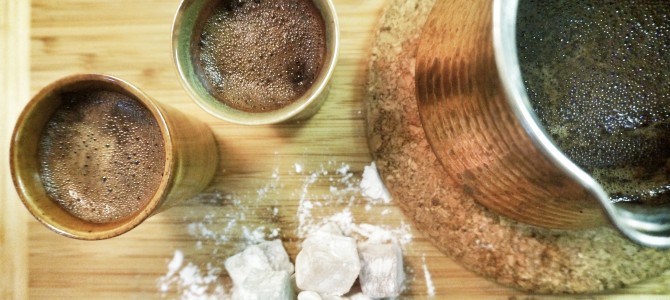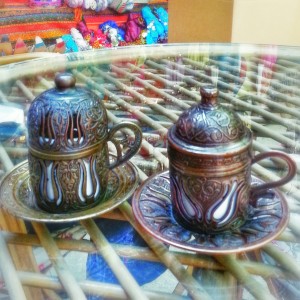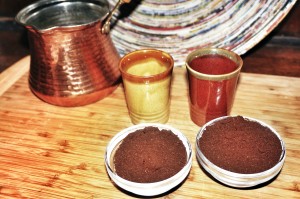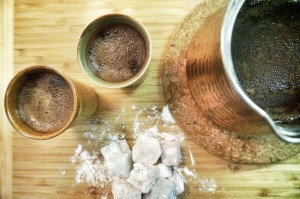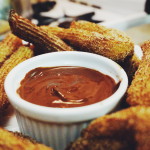Ok, so I’ll admit it. I’m a bit of a coffee snob. I like good coffee that is brewed well. I don’t understand how people can get coffee from a convenience store and be happy with it.
I brew our coffee every morning, because I am picky about it, and Lydia isn’t. At least she recognizes good coffee versus not.
So when we started planning our summer trip to Europe we nailed down France and Italy as places we both wanted to visit fairly quickly. Hello espresso. And the search for the last week of the trip began. Lydia settled on Turkey, as it had been on her list for years. And her selling point to me? Turkish coffee. Okay, that among others, but it was a big point.
My first experience with Turkish coffee was at a restaurant here in our area called Mazza. Dark, heavy and rich, it was everything I loved about coffee. I’ll admit, it did catch me a little off guard and I gave in and added some sugar, which to me is sacrilege. But I was intrigued for sure.
Turkish coffee is a method of preparing coffee, not necessarily the type of coffee.
It isn’t a difficult method, but it is easy to mess up if you aren’t paying attention.
Traditionally when a Turkish couple wants to get married, the suitor and his parents paid a visit to the bride-to-be and her parents for the official announcement or negotiation, depending on which history you read. During this visit the bride-to-be is to make the best Turkish coffee she has ever made, for her guests.
Today, couples just make the announcement to their parents, as they do in many other cultures, but the tradition of Turkish coffee is rarely skipped.
For the rest of us, Turkish coffee is the way you finish your meal. It is a good excuse to extend the conversation a little longer. Plus, the coffee is great.
We learned this our first night in Istanbul after 12 hours of travel. We tracked down a restaurant and wanting to not pass out in our food, ordered coffee, and our server looked so confused at that.
Generally Turkish coffee is served in little demitasse cups, and is cooked with the sugar. Milk is never added. But you will get a glass of water with your coffee to cleanse your palate. You want to be able to taste the coffee.
The Method:
To make Turkish coffee, you need a finer grind than even your espresso grind. The grinder at your local grocer or coffee purveyor has a Turkish setting you’ve probably never noticed. And you’ll want a lighter roast, as you are cooking the coffee in this method rather than just brewing it.
Measure the amount of water you will need for the number of servings you are making.
Put your pot on the stove and set the heat to medium, just until the water warms up.
Add a tablespoon of coffee per demitasse cup. Let the coffee float on the surface. If you stir, it may clump
Add sugar. If you are going to add sugar, this is when it happens. Hold off on stirring it here.
When the coffee starts to sink in to the water, and the water is warm enough to dissolve the sugar, stir it and turn the heat to low.
Watch closely, because things happen fairly quickly at this point.
Once your coffee starts to foam around the rim, lower the heat or move the pot away from the heat.
Keep the heat low. Don’t let it get hot enough to boil. The idea is to build a thick froth.
Put it back on the heat, and repeat this process. Some sources tell you to heat it a third or fourth time. I found twice to provide the best results for my tastes.
At this point, you can spoon some of the foam into each cup, or keep it all to yourself. I won’t tell.
In Turkey, coffee is served with Turkish Delight. Our first night in Istanbul, we didn’t know that, and thinking the little cube sitting on the plate was sugar, in to the cup it went. It still tasted great.
Try it and enjoy.
Greg

